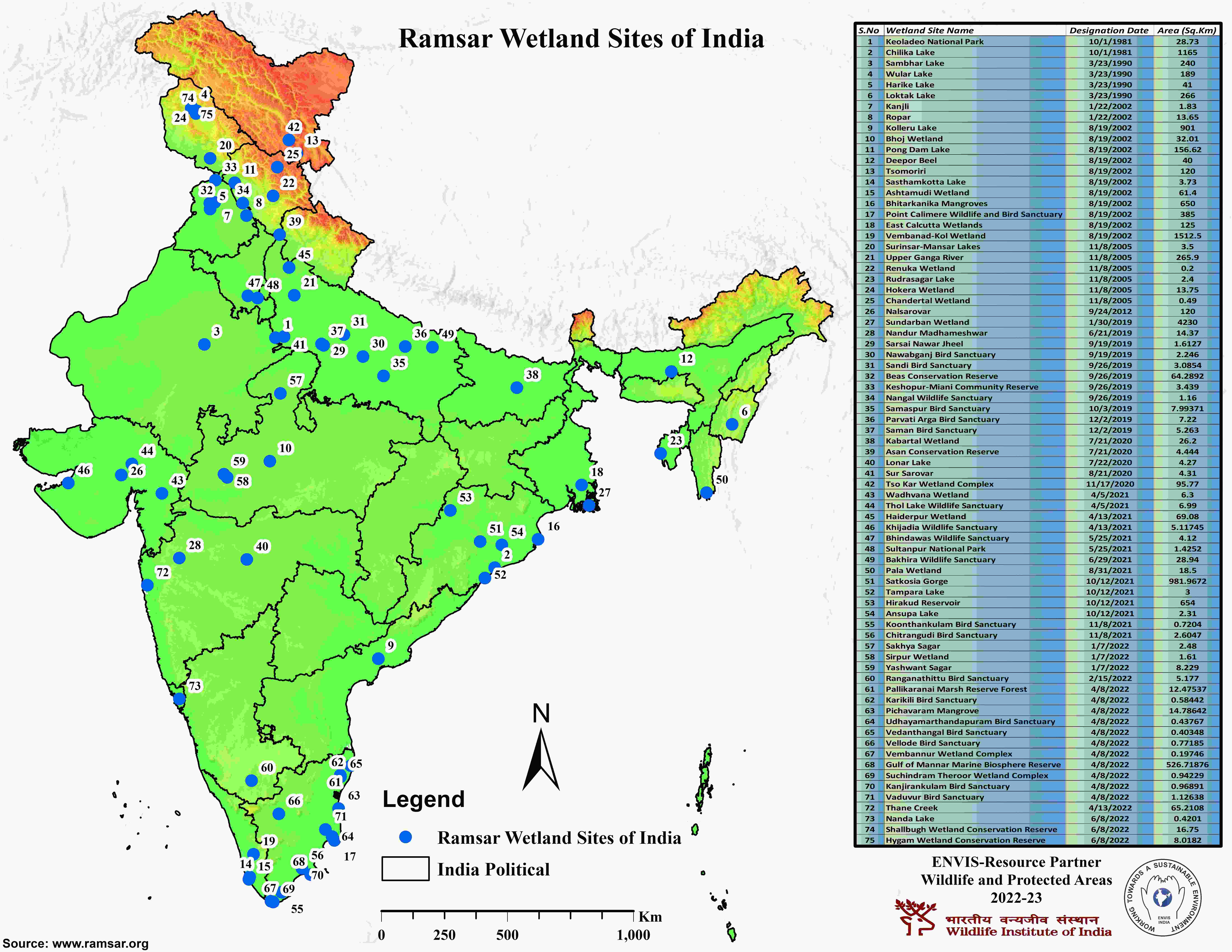A meeting of the Consultative Committee of Members of Parliament attached to the Ministry of Environment, Forest and Climate Change (MoEF&CC) took place in New Delhi, chaired by Union Minister Shri Bhupender Yadav. During the meeting, India’s significant achievement of declaring 75 Ramsar Sites to the list of Wetlands of International Importance under the Ramsar Convention on the occasion of the country’s 75th year of independence was highlighted.
This milestone showcases India’s commitment to conserving wetlands and their ecological importance. The network of Indian Ramsar Sites now covers approximately 1.33 million hectares, which accounts for over 8% of the known wetland extent of the country. With 75 designated Ramsar Sites, India’s network ranks as the second largest in Asia and the fifth largest in the world in terms of the total number of designated Ramsar Sites.
The members of the committee appreciated the efforts of MoEF&CC for designating 75 wetlands as Ramsar Sites, recognizing the importance of preserving these valuable natural resources for future generations.
More About the News
- During the meeting, the committee members were informed about the recently launched Amrit Dharohar Initiative by MoEF&CC on World Environment Day, June 5, 2023. This initiative aims to promote the conservation values of Ramsar Sites and create a demonstration effect for other wetlands of national and international importance. The scheme will be implemented over the next three years with the goal of safeguarding and enhancing biological diversity, cultural heritage, food, water, and climate security, sustainable livelihood opportunities, and societal well-being.
- The Amrit Dharohar Initiative follows a holistic approach and is guided by the Mission LiFE and Sahbhagita approaches. It includes four key components: Species and Habitat Conservation, Nature Tourism, Wetlands Livelihoods, and Wetlands Carbon.
- The committee appreciated the comprehensive approach of the Amrit Dharohar implementation strategy and agreed to address wetland conservation issues in coordination with state and UT governments, involving NGOs, Panchayats, and local communities.
- Union Minister Shri Bhupender Yadav highlighted the importance of wetlands and shared the steps taken by the central government, under Prime Minister Shri Narendra Modi, for wetland protection and conservation. He emphasized the significance of the wise use of wetlands.
- Shri Ashwini Kumar Choubey stressed the importance of involving panchayats and youth in wetland conservation and management. This collective effort will play a crucial role in preserving these vital ecosystems for future generations.
What is a Ramsar Site?
A Ramsar Site is a wetland that is designated to be of international importance under the Ramsar Convention, also known as “The Convention on Wetlands”, an international environmental treaty signed on 2 February 1971 in Ramsar, Iran, under the auspices of UNESCO. It came into force on 21 December 1975, when it was ratified by a sufficient number of nations. It provides for national action and international cooperation regarding the conservation of wetlands, and wise sustainable use of their resources. Ramsar identifies wetlands of international importance, especially those providing waterfowl habitat.
Ramsar Sites in India

- 3 August Current Affairs 2023 in English
- MoU Between Subroto Mukerjee Sports and Education Society and All India Football Federation (AIFF) to Promote Football at Grassroot Level
- Dr. Mansukh Mandaviya Delivers Keynote Address at the 13th Indian Organ Donation Day ceremony
- Education Ministry Forms Expert Panel on Anti-Discrimination in Higher Education
- Concerns Arise Over Cheetah Deaths at Kuno National Park
FAQs
What is a wetland?
What are the responsibilities of a Ramsar Site?
The Contracting Party is also responsible for providing information about the site to the public and for ensuring that the site is used in a sustainable manner.

